Central Bhutan might not be the most popular region of Bhutan – it surely sees fewer tourists than the West. But, the beautifully cultivated valleys with a backdrop of stunning Himalayan peaks are worth a visit. A postcard-worthy region, Central Bhutan is the cultural heartland of the nation. Thanks to the presence of prominent temples and monasteries, there is a ton to explore.
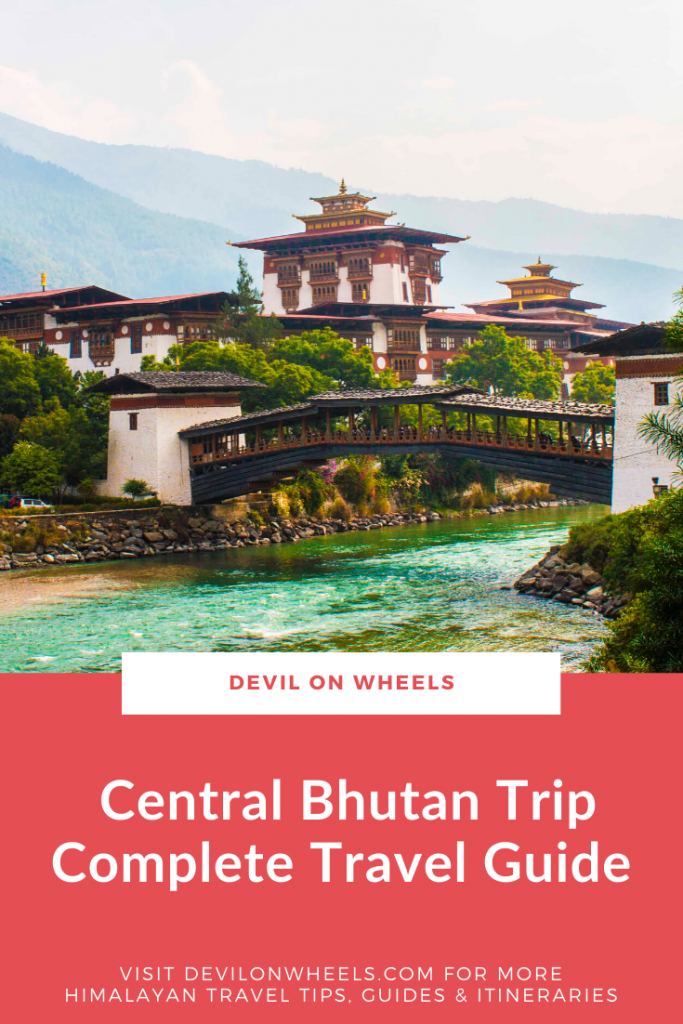
If you’re looking to escape tourism, rejuvenate and immerse yourself in the culture of Bhutan – look no further. Central Bhutan is the definition of off-beat so put your hiking shoes on and discover, discover, discover!
Let's quickly dive into the details:
About Central Bhutan
Trongsa Dzong is the western gateway to Central Bhutan, which lies somewhere behind the 3420m-high Pele La and the Black Mountains. From Trongsa, a short drive over the Yotong La (3425m) leads to the four valleys of Bumthang, a magical region rich with relics, hermitages, and sacred sites from the visits of Guru Rinpoche and Pema Lingpa.
Culturally, Central Bhutan is closer to Eastern Bhutan, and as the East, the predominant school of Buddhism is Nyingma. The towns, however, have been developed with a mixture of both Eastern and Western design. Trongsa, for example, has the Eastern characteristic of being located on the side of a hill, while Jakar meanders along a wide and lush valley, like towns in the West.
The major regions of Central Bhutan include – Chhumey, which is famous for its woven woolen goods. After this place, you visit can Jakar – the administrative center of the district and the first place where Buddhism entered Bhutan.
Along with this, Tang has many sacred sites. Also, you must not miss a visit to Ura – a quaint village high in the mountains. Central Bhutan is also full of natural wonders including – Jigme Singye Wangchuk National Park, Royal Manas National Park, and the Phibsoo Wildlife Sanctuary.
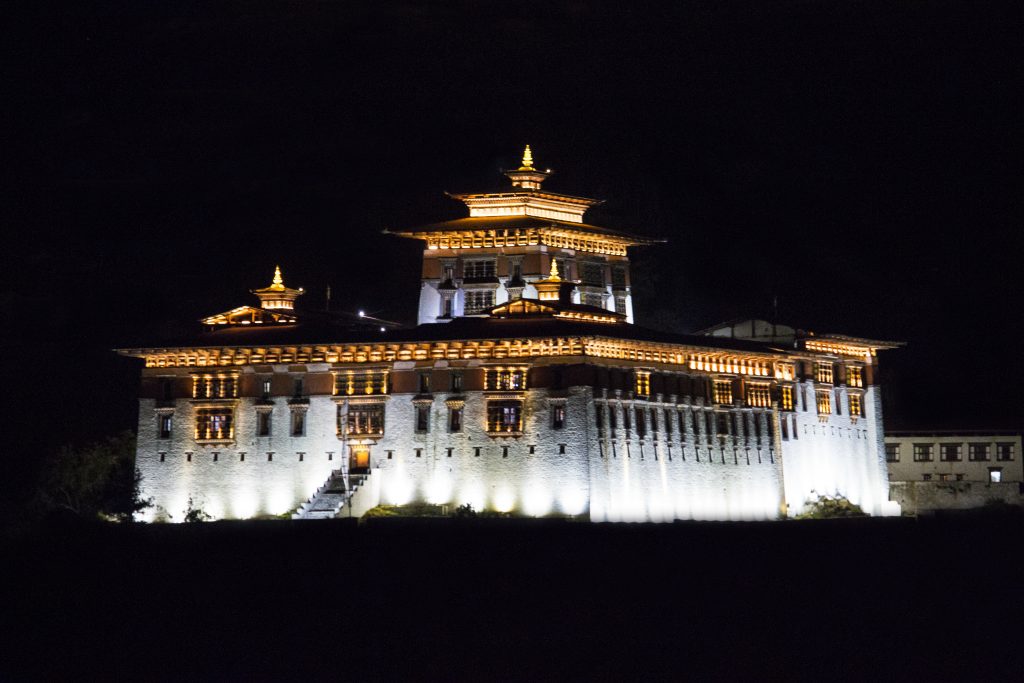
History
Central Bhutan plays an important role in the history of the country. It is believed to be the first part of Bhutan, which was inhabited. There is substantial evidence of prehistoric settlements in the Ura valley of Bumthang and the southern region of Khyeng. Historically, multiple independent kings ruled central Bhutan over the centuries.
These and many other valleys were separate principalities ruled by independent kings. In fact, Bumthang continued to be a separate kingdom, up till the 17th century.
Bumthang has retained its political importance over the years. Several royal residences and country estates remain, including Kuenga Rabten, Eundu Chholing, and Ogyen Chholing.
Best time to visit Central Bhutan
Unlike the Western and Eastern regions of the country, Central Bhutan is worth visiting year-round. Why? Thanks to the many sunny valleys, especially Bumthang, and the beautiful weather across the year.
While winters can be cold, especially in Bumthang, but days are usually sunny, and there are fewer tourists – remember to dress up in layers, and you’re good to do. Besides, there is something truly magical about Himalayan mountains covered in snow, and you get to enjoy the stillness of time and the peace of the place. Won’t you agree?
Also, I should point out that southern regions, especially Gelephu and Royal Manas National Park, are extremely hot in summer.
If you’re looking to get maximum bang for your buck, I suggest you plan your visit around festivals. These include those at Ura, Trongsa Dzong, Jamey Lhakhang or Kurjey Lhakhang.
Pro Travel Tip: Do not forget to check this complete month by month guide on the best time to visit Bhutan.
Major Attractions in Central Bhutan
With so much aplomb, this list has to be amazing for all that you can do. Honestly, you can truly plan your entire week-long trip, exploring various corners of Central Bhutan. Trust me; you’ll not be bored for a second.
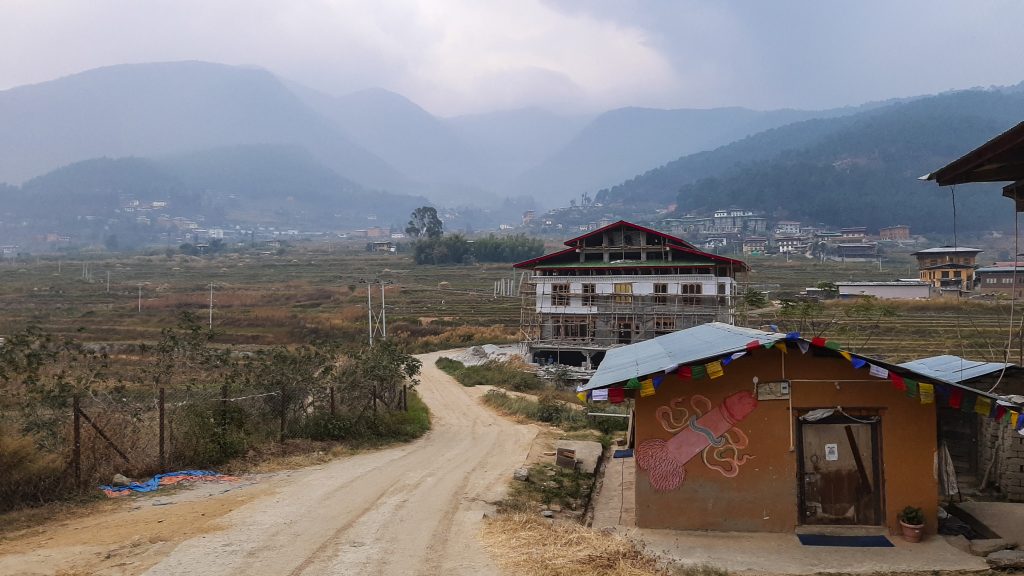
Sacred sites
Given the historic significance of the region, let’s dive deep into some of the sacred and revered places around the region.
Kurjey Lhakhang, Jakar
One of Bhutan’s most sacred monasteries. A body print of Guru Rinpoche is preserved in a cave around which the oldest of the three buildings. The original building was constructed in 1652 by Trongsa Penlop. The latest addition was added by the late Queen Mother Ashi Kesang Wangchuk in 1990.
Jambey Lhakhang, Jakar
This is one of the 108 monasteries that were miraculously constructed by King Songten Gampo in one night. The monastery is located between Kurjey Lhakang and Jakar Dzong.
Tharpaling Goemba, Chhumey
Founded by the Dzogchen master Longchen Rabjam in 1352, the monastery was also home to the famous Nyingma Guru Jigme Lingpa in the 18th century. It is located at 3,600 meters and is home to around 150 monks. You can reach it by an unpaved road.
Thangbi Goemba, Jakar
Founded in 1470 by Shamar Rimpoche.
Mebar Tsho (Burning Lake), Tang
A place where some of Guru Rinpoche’s scriptural treasures (Tib: terma) were discovered in the 15th century by the famous treasure discover Pema Lingpa.
Tamshing Goemba, Jakar
A monastery established in 1501 by the local Buddhist saint Pema Lingpa. The two-story building contains some lovely frescoes and has a shallow ceiling (apparently Pema Lingpa was very short!) Also, there is the 500-year-old suit of metal chain made by Pema Lingpa located on the first floor.
It is considered auspicious to circumambulate the temple three times with the chain draped over the back and shoulders.

Sumthrang Lhakhang, Shinyer Village, Ura
Several hundred-year-old monasteries with a lot of simple but beautiful artwork. Those visiting in January should notice the two flowering trees near the main gate, while other trees of the same variety lay bare. Legend states that these trees sprouted from a walking stick placed at the gate by the monastery’s founder, Gyelwa Lhanangpa.
Pro Travel Tip: Check our article about important tips for saving costs on the Bhutan trip, if you are looking to make a budget trip.
Must Visit Places in Central Bhutan
Let us look at some of the must-visit places in Central Bhutan.
Trongsa viewpoint
If there is one dzong in Bhutan with the BEST location – then Trongsa wins. The dzong lies high up above the Mangde Chhu – with a hugely beautiful sheer drop to the south. The sweeping views and the contradicting architecture make the place almost movie-like.
There’s a beautiful symphony of buildings comprising the trail with many alley-looking corridors and stunning wide stairs. The paved courtyards add to the mystique of the dzong. The southernmost part of the dzong, Chorten Lhakhang, is the location of the first hermitage, built-in 1543.
Trongsa Dzong is closely connected to the royal family. The first two hereditary kings ruled from this dzong, and tradition still dictates that the crown prince serves as Trongsa Penlop before acceding to the throne.
This Dzong also plays an integral role, providing it with great powers. This path is the passing of the only trail connecting the Eastern and Western parts of the country. While most visitors these fays use the main eastern gate, you can choose to do a steep climb via Mangdue Foot Trail from the viewpoint and enter the dzong via the western gate, in traditional fashion.
The five-day Trongsa Tsechu is held in the northern courtyard in December or January and culminates in the unveiling of a Thondrol (a giant thangka – a painted or embroidered religious picture).
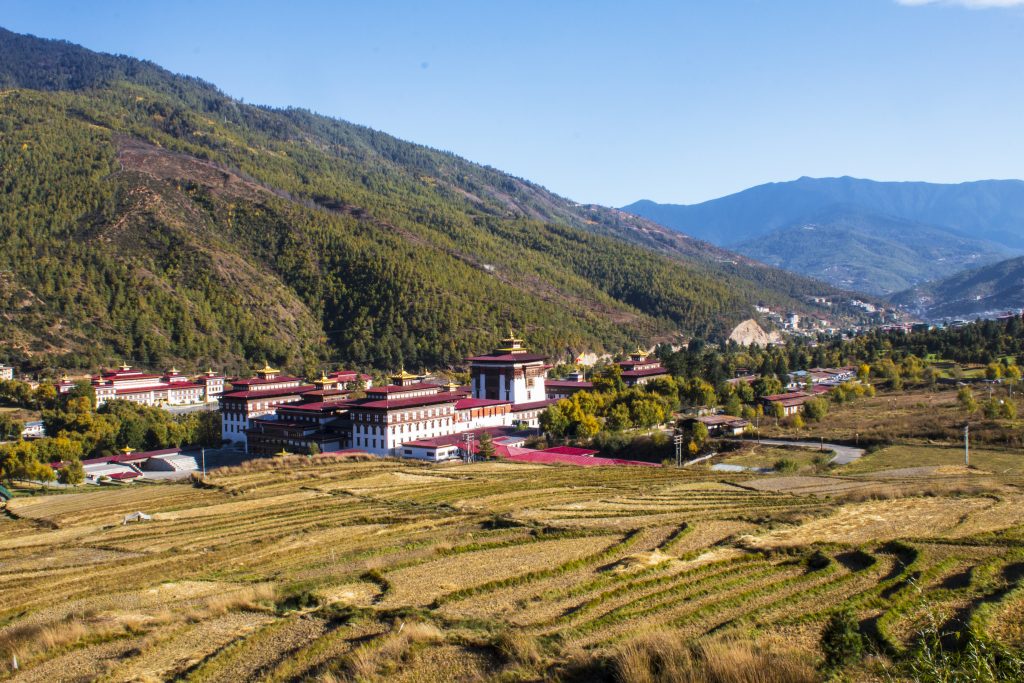
Tower of Trongsa Royal Heritage Museum
This watchtower (Ta-Dzong) overlooking the dzong now houses an excellent museum. The five floors of displays tell the history of the monarchy through such varied treasures as the 500-year-old jacket of Ngagi Wangchuk, the second king’s saddle, and a copy of the famous raven crown. You can drive here and then walk back to town down a staircase past several chapels.
The most sacred religious item is a copy of the Padma Kathang, a copy of Guru Rinpoche’s biography discovered by Pema Lingpa underneath the Jokhang Temple in Lhasa. There are two Lhakhang inside the ta dzong; the top-floor Gesar Lhakhang is dedicated to the 19th-century Penlop of Trongsa, Jigme Namgyal.
There are sweeping views from the roof, plus a souvenir shop and a ground-floor cafe providing refreshments (and lunch by prior arrangement).
Pro Travel Tip: Are you wonder how much will be the cost of Bhutan trip? Check our detailed guide on how to calculate the cost or budget of Bhutan trip?
Jakar Dzong
Jakar Dzong is in a picturesque location overlooking the Chokhor valley. The official Bhutanese name for the place is Yuelay Namgyal Dzong, who kept so in honor of the victory over Tibetan ruler Phuntsho Namgyal’s troops. A rare feature of the dzong is that the central tower is not inside the wall – so you can’t circumambulate it.
The approach to the dzong, with a perimeter of over 1500m, is made on foot along a stone-paved path. The entrance leads into a narrow courtyard surrounded by administrative offices.
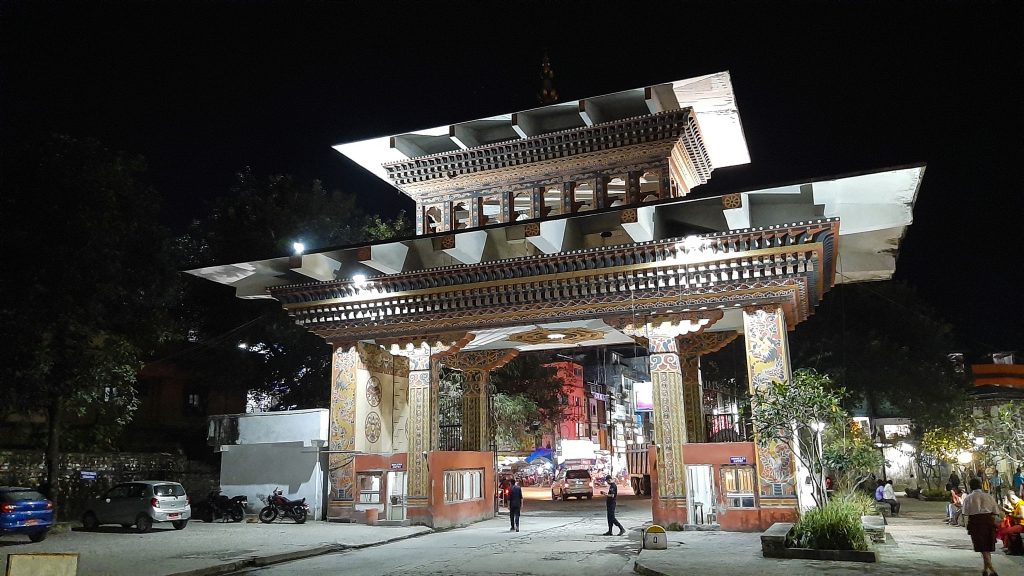
The utse is on the east side of the courtyard, and beyond that is the monks’ quarters. At the west end of the dzong is a slightly larger courtyard, also surrounded by administrative offices. Behind here is a half-round ta dzong (watchtower). A walled passage leads from the dzong down the hill to a nearby spring. A feature that ensured water could be obtained in the event of a long siege.
Pro Travel Tip: If you prefer traveling solo, this article will help you plan a solo trip to Bhutan.
Hiking Routes in Central Bhutan
The Bumthang region in central Bhutan is a stunning site for a bunch of hikes.
Day Hikes in Bhutan
Most of these hikes will either lead you through or up to remote sacred sights, wide valley views and sublime picnic spots.
- A good short walk is between Kurjey Lhakhang and Tamshing Goemba via Do Zam and the nearby rock painting of Dorji Drolo, though the new road bridge has increased traffic. You can extend the walk by 15 minutes by walking to Kurjey from Jampey Lhakhang.
- Pelseling Goemba is a half-day hike from the Swiss Guest House in Jakar to the large ‘Lotus Grove’ Monastery. While it is all uphill (2½ hours), gaining 800m, but the walk is quite pleasant. Thanks to the hike being varied, through a mix of forest, meadows, and villages, and great views reward you here. You’ll enjoy your entire experience.
- Kunzangdrak Goemba – for a remoter hike, drive to Pelseling and then hike over the ridge and around a side valley to this retreat in the Tang valley.
- Tharpaling Goemba is one of the most celebrated one-way walks from Lamey Goemba. It takes you over the ridge to Tharpaling in the Chhume valley. The trail branches off a logging road 1km past the Goemba. Even though the first couple of hours are treacherous, you’ll be walking uphill through rhododendrons and bamboo. But, once you finally pass the crest, you’ll get rewards with stunning bare hillsides of the Chhume valley to the Zhambhala Lhakhang, Choedrak Hermitage, and, finally, Tharpaling.
- Drak Choeling Retreat is a 90-minute uphill hike from Pema Sambhava Lhakhang. It will take you up through the forest to cliffs and a silent retreat center, with sweeping views over the Bumthang valley from a prayer-flag lookout.

Longer Hikes
If you’re more of adventures, looking for complete isolation and solitude, you might want to try some of the below mentioned longer treks. I assure you these will surely satisfy all of your nature cravings.
Nabji Trek
The Nabji Trek should take you a total of 4 days to conquer. The start of the trek is from Tongtongphey, and post that you’ll spend your nights at Jangbi, Kudra, Nabji, and Nimshong.
If you’re in the mood for a low-altitude winter trek, and you want to experience the rural Bhutanese life, leisurely enjoy birdwatching and immerse yourself in family interactions, over the mountain views – then Nabji is perfection is more important than mountain views, the Nabji trek could well be your cup of tea.
What’s special about this trail is that it is truly a representation of community-based tourism in Bhutan. For this trek, local villagers are employed on a rotating basis to offer services and amenities such as porterage, village tours, cultural shows, and food at semi-developed campsites. Campsite fees go into a community fund to support education, conservation, and tourism development.
However, I must mention that infrastructure is rapidly developing in Bhutan. Because of this, both ends of the trek are becoming shorter. Depending on how much walking on roads is desirable, you may end the trek at Nabji or Nimshong. This trek you can easily do in the opposite direction.
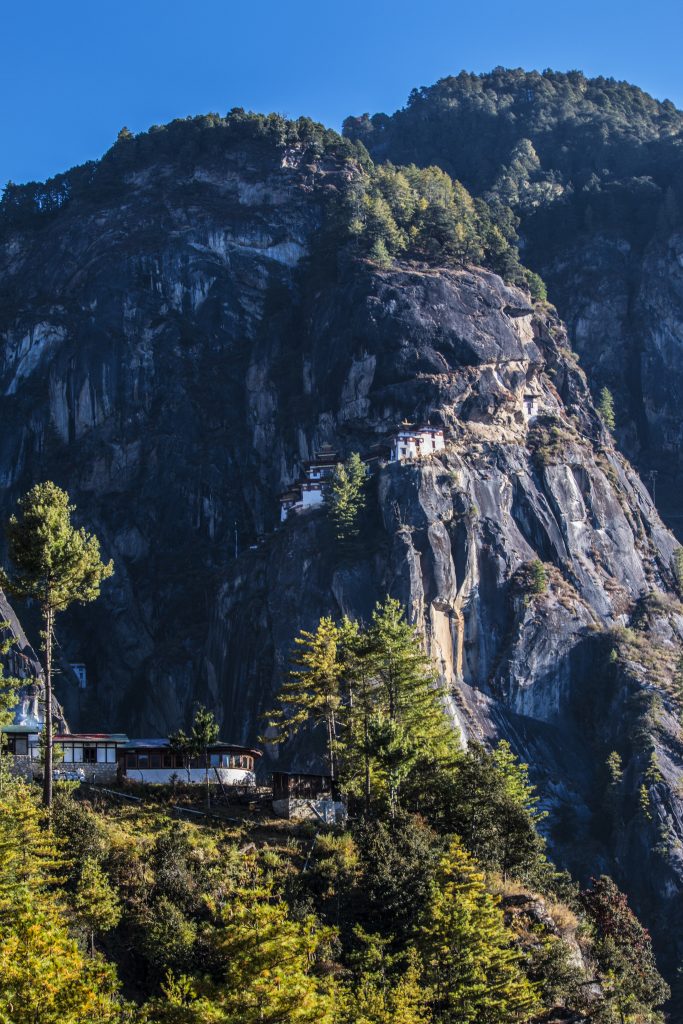
Bumthang Cultural Trek
A slightly medium-level difficulty trek, this one-day cultural trek will take you to a maximum elevation of 3360 meters. Best completed during March-May or September – November. You’ll start at the Ngang Lhakhang and finish off at Ogyen Chholing. Of course, this trek also has an impact due to the construction of roads. Mainly because of which you can now accomplish it in a day.
If you do so, you can stay at a beautiful although simple accommodation in Ngang Lhakhang. If you’re in the mood for something luxurious, then digs at Ogyen Chholing at the start and end of the walk will make for a beautiful home for a day. The walk is short but packs in a tiring 750m climb to the Phephe La.
If you want to make it a two-day camping trek, it is possible to start from Thangbi Goemba, walk up the true left bank of the Chamkhar Chhu and camp at Sambitang, about a 30-minute walk from Ngang Lhakhang. There is a second camping spot, and a farm stay at Tandingang (Tahung) at the far end of the trail, but most groups continue to nearby Ogyen Chholing, now that there is a road that exists.
Pro Travel Tip: You can check this detailed guide on how to get all the necessary permits of Bhutan [2020 updates included].
Multiday Hikes in Bumthang
But, these are not all! With so many beautiful interconnected hiking trails all around the valley, you can string together many of these to make a long stretch as customized as you like!
For example, you could start at Menchugang and complete a day-hike towards Luege Rowe (or even further ahead to Shugdrak). Then, you may choose to start hiking upwards of the south bank of the Chamkhar Chhu to Ngang Lhakhang.
The next day, you may choose to do a long day and hike over the pass Phephe La and head on over to Ogyen Chholing (the Bumthang Cultural trek). This excursion you can push further, adding on a day towards Thowadrak Hermitage. If you’re looking to bee in the woods for longer, you could return to Jakar and hike over the ridge to Pelseling Goemba and then down to the Swiss Guest House.
For a full week’s walking with some camping, add on the three-day Owl trek in the reverse direction, starting at Tharpaling Goemba and picking up this itinerary at Menchugang.
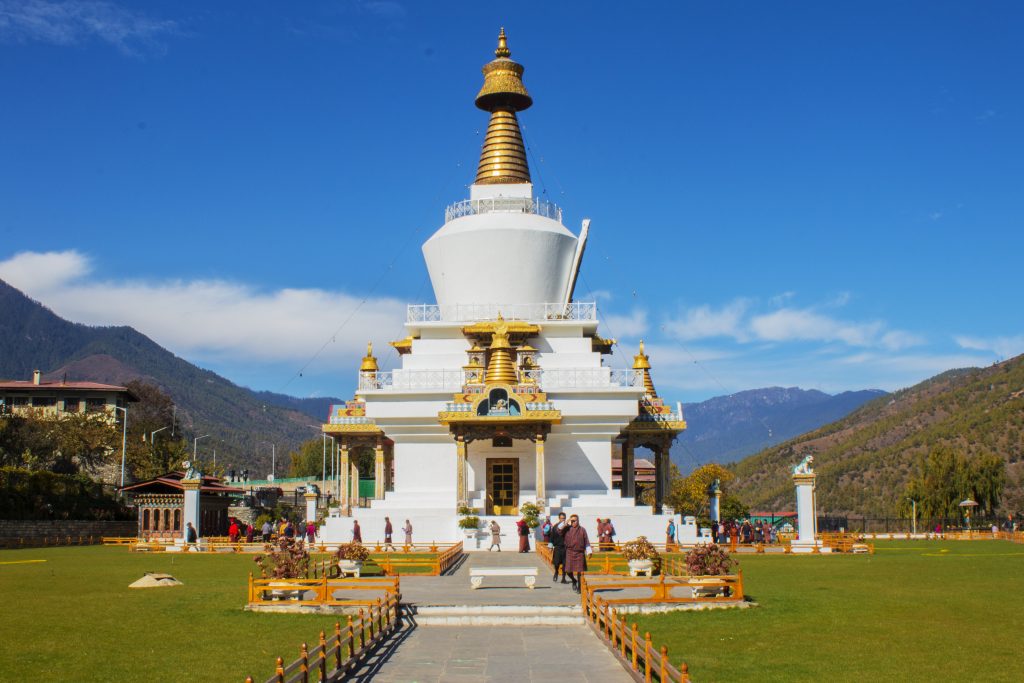
Other not to miss experiences in Bhutan
- Duer Hot Springs – A one-day trek from the road head. The trek is arduous but stunningly beautiful. Blue sheep, musk deer, and Himalayan bear are common in the Duer Hot Spring area.
- Weaving houses – Chhumey is famous for its wool weavers, and it is possible to watch the work in action and to purchase items (called Yethra) straight off the loom.
- Wilderness backpacking – The region is perfect for long treks in the mountains. You should check our complete travel guide on Bhutan’s National Park and Wildlife Sanctuaries.
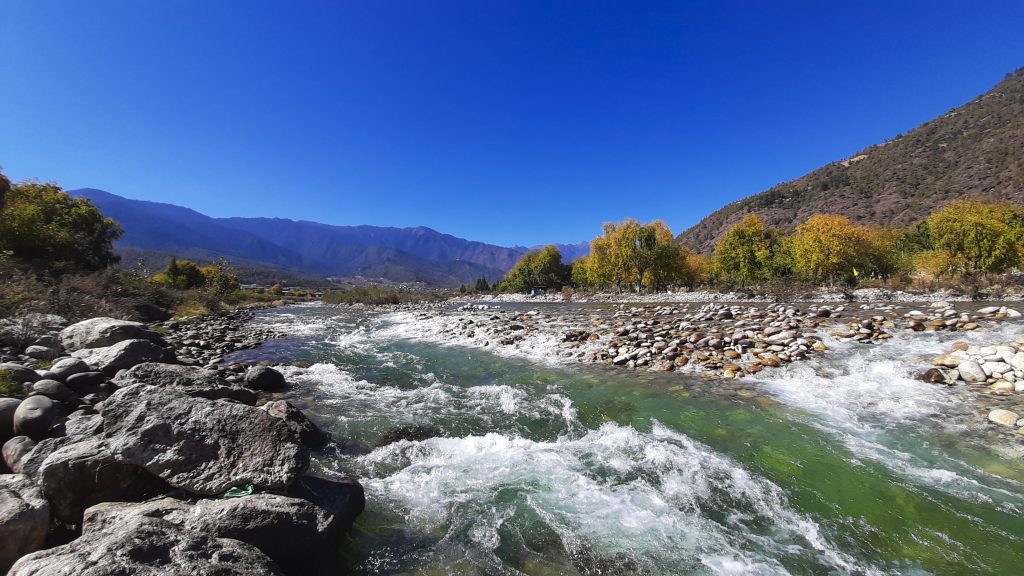
Food Options in Central Bhutan
Go out and eat authentic meals at many dhabas and roadside shops. Explore little towns and ask around for the best meals to have. Also, if you’re looking for some comfort of familiar – Cafe Perk has some of the best coffees and cakes.
Another decent place with hearty food is the Jakar Village Lodge, where you must meet the owner and enjoy his many tales and drink his many teas. The stunning Himalayan views from the terrace are, of course, a bonus. In the mood for beer? Head on out to the Panda Beer Garden Café, which is situated next to the Bumthang Brewery, for an array of some western food.
You should always carry your water bottle and refill it as many times as you need water. It will not only keep you hydrated always, but you will also help in saving the Himalayas from plastic garbage. Remember, every tiny step counts and your step in this direction can help save the Himalayas too !! 🙂 🙂
Stay options in Central Bhutan
There are a bunch of stay options in Bhutan, ranging from guesthouses to luxury resorts. Depending on your budget and style of travel, you can pick from a bunch of options. For example, Swiss Guest House
It is the most rural place – complete with a wooden farmhouse surrounded by apple and pear orchards on a hill overlooking the valley. In 1983 this was the first guesthouse in Bumthang. Also, the Ogyen Chholing Heritage House is superb and sublime all at once. With stunning authenticity and a beautiful ancient building – you’ll be welcomed with comfy beds and yummy food.
For the adventurous souls, the Marang Forest Lodge is a wonderful option. The River Guides of Panbang run the ‘lodge’ comprises nine tents mounted on platforms besides the Marangang Chhu. Tents are simple but comfortable, with twin beds and portable electric lights. Hot showers are available in two separate blocks and a large open-sided pavilion functions as the communal dining area.
For those looking for some luxury, however, the Yangkhil Resort makes for an ideal stop. This resort, 1.5 km West of Trongsa, is an excellent choice, with 21 rooms constructed in five blocks on a terraced hill facing the dzong. The gardens, with their lovely spring pear blossom, are an ideal place to relax, so arrange your itinerary for early arrival.
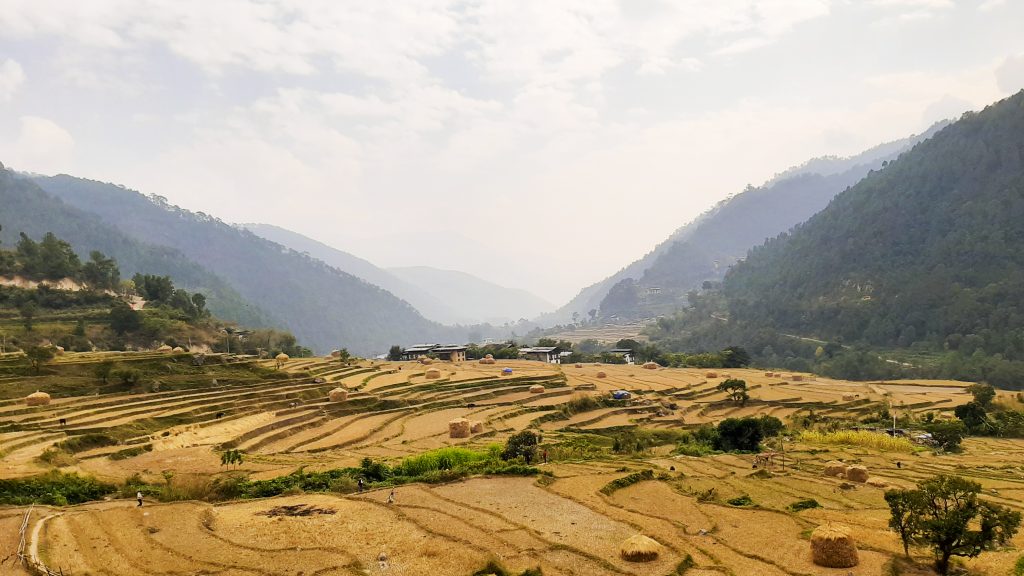
Conclusion
While there are not too many tourists visiting central Bhutan, I urge you to go. Go and experience the genuine joy of an untouched culture and the pure bliss of being a nature’s child in earnest. You’ll have to do much; you’ll want more time to do it all.
Have a travel question?? You can subscribe to my YouTube channel and leave a comment to ask your travel questions about traveling to the Himalayas.
Go out to Central Bhutan and enjoy the heritage that is unapologetically Bhutan – you’ll love every second of it.


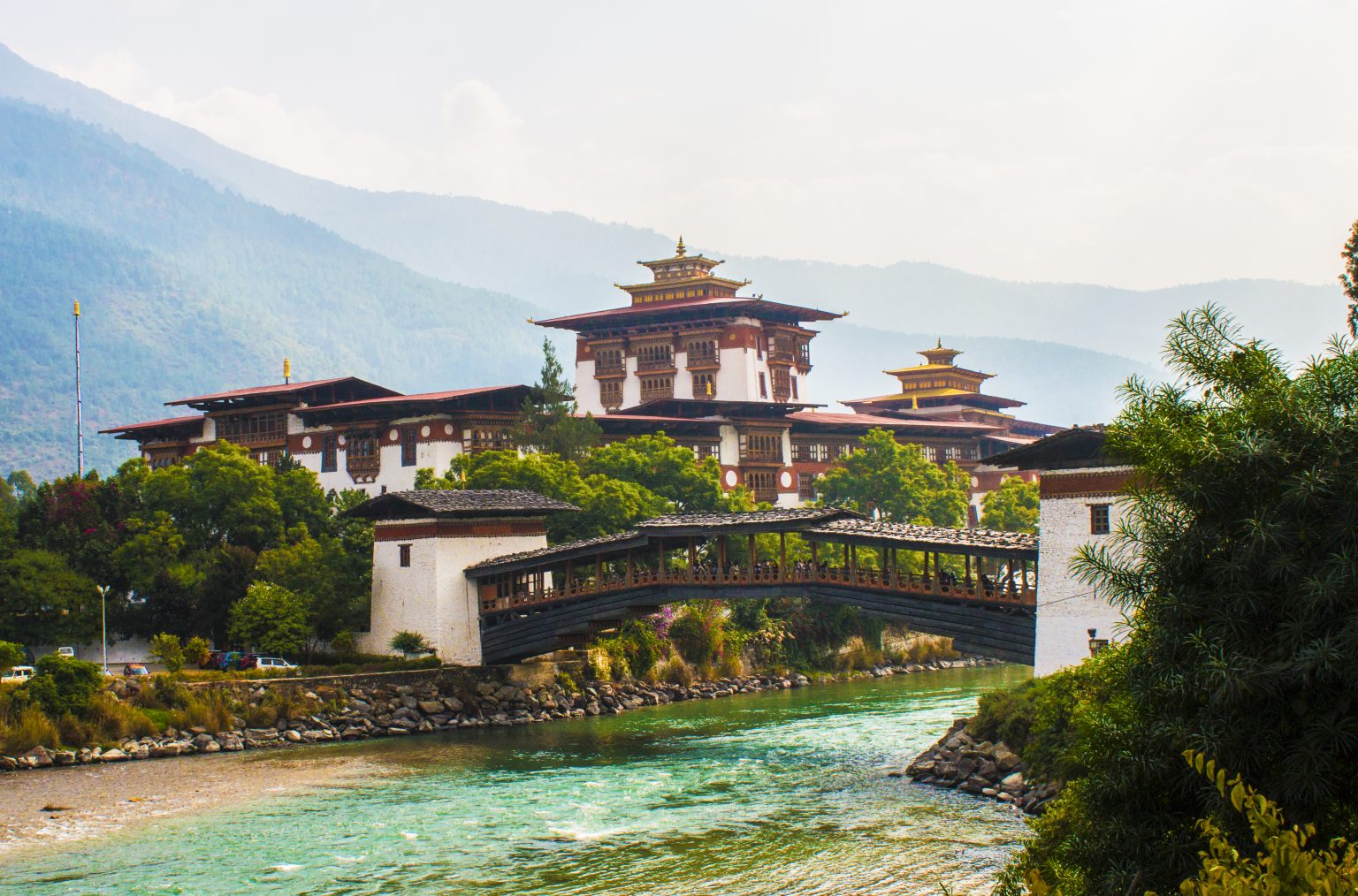


![How to tackle water-crossings on Ladakh Bike Trip / Spiti Valley Bike Trip? [20 Important Tips]](https://discoverwithdheeraj.com/yt_vid_thumbs/ladakh/82.png)
